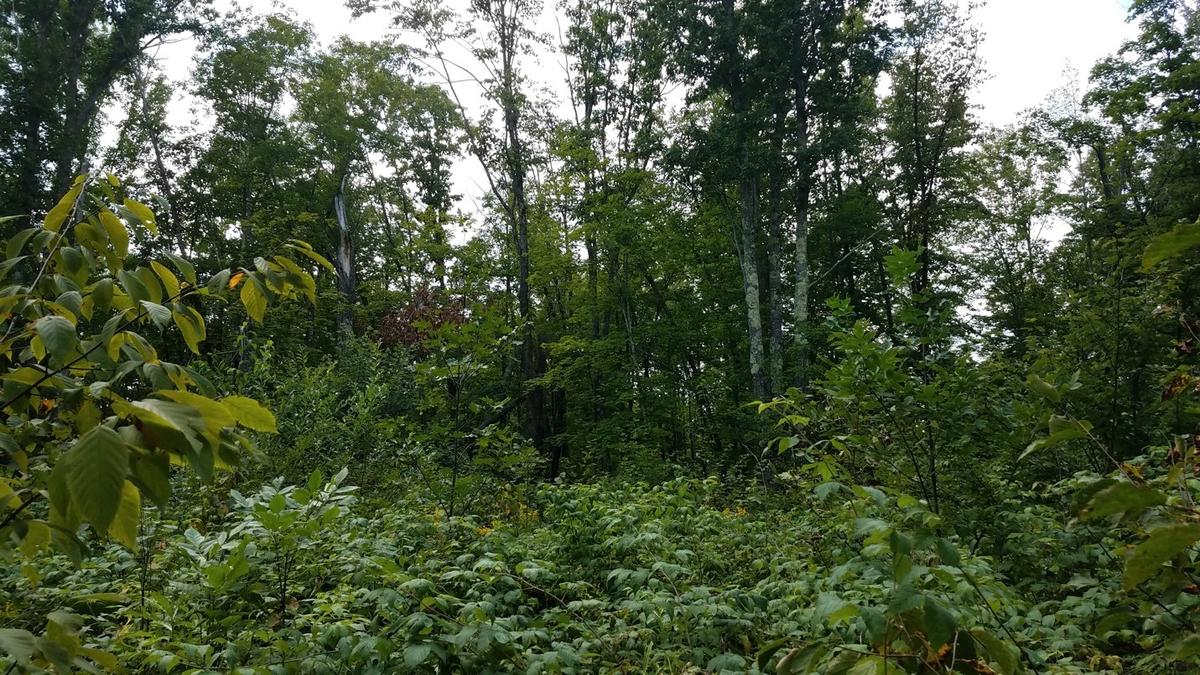Overview
A selection system was applied to an uneven-aged stand consisting of mature northern hardwoods. Through group and individual selection on a ten to twenty year cutting cycle, red maple and sugar maple were drastically decreased in basal area in order to promote the growth of quality crop trees and allow greater structural diversity in the stand (Figure 1).
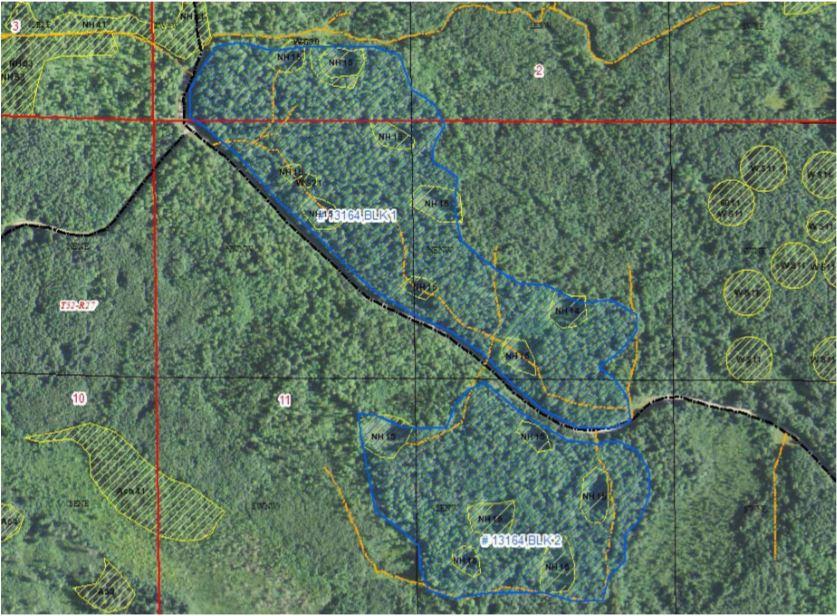
Figure 1: The area shaded in blue is where the select cutting occurred. The yellow circles to the right of the shaded blue is where the group selection cuts occurred.
Silviculture Objective(s)
Through individual or group selection harvesting, maintain an uneven-aged stand with three or more age classes. The current cover type, northern hardwoods, will be maintained after the treatment. Promoting a multi-aged stand maximizes forest regeneration and stand quality. The stand will be tended using variable density thinning to mimic the diversity found in an unmanaged stand, as well as to promote the dominance of northern red oak and paper birch. In addition, snags, den trees, mast trees, and vertical stratification should be retained to provide wildlife habitat.
Pre-treatment stand description and condition
Stand establishment and management history:
1994 & 1997: Birch salvage and thin from below, of mostly firewood
Pre-treatment species composition:
The stand was initially composed of basswood, sugar maple, red oak, black ash, and paper birch.
Pre-treatment growth and stocking:
The pre-treatment basal area totaled 128 sq. ft/acre. Basswood made up the majority at 76 sq. ft/acre with sugar maple following at 25 sq. ft/acre (Table 1).
Table 1: Pre-treatment basal area (sq. ft/acre) by species.
| Species | Basal Area (sq. ft/acre) |
| Black Ash | 5 |
| Paper Birch | 9 |
| Red Maple | 11 |
| Sugar Maple | 25 |
| Basswood | 76 |
| Red Oak | 2 |
| Total | 128 |
Landowner objectives/situation:
Aitkin County would like to increase the diversity of the stand, reduce the abundance of maple, and promote the growth of quality hardwoods, such as basswood, red oak, and paper birch.
Silviculture Prescription
Apply group and individual selection cuts to maintain an uneven-aged system to promote three or more age classes and release crop trees. The creation of varying gap sizes allows for regeneration of shade tolerant and intolerant species and further promotes multiple age classes. With harvests occurring on cycles between ten and twenty years, one third of the stand basal area should be removed with each cutting cycle.
Individual trees selected for harvest are marked based on risk, defect, vigor, crown competition with dominant crop trees, or release of advanced regeneration. Areas selected for group harvest are chosen based on forest inventory data and were designed to leave 20 merchantable trees per acre. Best management practices are to be followed by retaining snags, slash, and residual trees. Leaving coarse woody debris and residual trees not only increases the structural diversity of the stand, it also provides wildlife habitat and protects water resources that could be affected by harvest operations.
Basal area should be primarily removed from red maple and sugar maple in order to decrease the abundance of these species in the stand. Black ash, paper birch, basswood, and northern red oak must also be reduced in basal area, but at a smaller magnitude than red maple and sugar maple.
The paper birch and red oak present are quality but represent a limited portion of the stand. In addition, advanced red oak regeneration is present. Therefore, group selection harvests should be used to maintain northern red oak and paper birch throughout the stand.
The Silviculture Prescription and Staff Assessment Form as well as an outline of the timber harvest plan for the site can be found in the Supplemental Content section below.
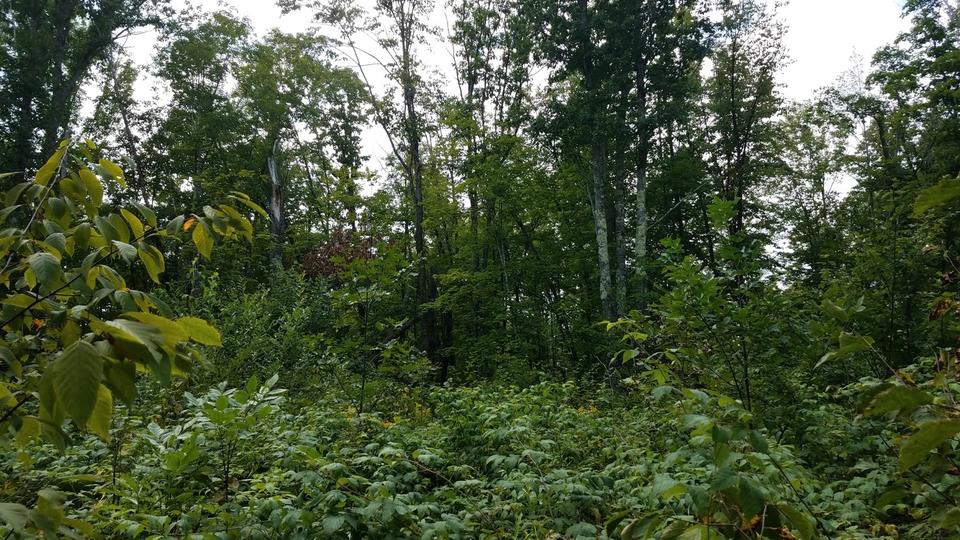
Figure 2: Taken in the summer of 2018, the stand has significant structural diversity, but stand growth is being optimized instead of individual tree growth. Dominant trees are within the lower diameter classes, so removing suppressed and intermediate
What actually happened during the treatment
During the winter of 2010-2011, using group selection harvesting, trees were removed from ten “holes”, or gaps, that ranged from a half acre to one acre. These holes together added up to about 23% of the stand. During this time, individual selection cutting also occurred throughout the stand. White pine stumps were found throughout the stand from previous logging operations, so it would be beneficial to plant white pine saplings in shaded portions of the stand to restore their presences.
Minnesota’s Forest Management Guidlelines (FMGs) were applied and included snags, slash, and residual trees being left throughout the stand to maintain structural diversity and sufficient wildlife habitat. Adequate access was left in order to allow for planting and budcapping in the future.
Total basal area was reduced from 128 sq.ft per acre to 85 sq.ft per acre, thus leaving 66.4% residual basal area, consistent with the prescription to remove about 1/3 of the basal area in each treatment. Residual stand carbon following the treatment was 1602.25. The species that experienced the greatest decrease in basal area were red maple and sugar maple, being decreased from 11 sq.ft per acre to 5 sq.ft per acre and 25 sq.ft per acre to to 12 sq.ft per acre, respectively. In addition, the basal area for basswood was reduced from 76 sq.ft per acre to 59 sq.ft per acre (table 2). A total of 457 cords were extracted during the harvest. Mixed hardwood made up a large portion of that with 389 cords removed (table 3).
Table 2: Species composition at the site, pre- and post-treatment.
| Species | Basal Area (sq. ft/acre) | Residual Basal Area (sq. ft/acre) |
| Black Ash | 5 | 3 |
| Paper Birch | 9 | 5 |
| Red Maple | 11 | 5 |
| Sugar Maple | 25 | 12 |
| Basswood | 76 | 59 |
| Red Oak | 2 | 1 |
| Total | 128 | 85 |
Table 3: The removal of timber in cords by species during the harvest
| Timber Species | Quantity (cords) |
| Paper Birch (bolts) | 16 |
| Oak (bolts) | 3 |
| Mixed Hardwood (pulp) | 389 |
| Basswood (bolts) | 44 |
| Ash (bolts) | 5 |
| Total | 457 |
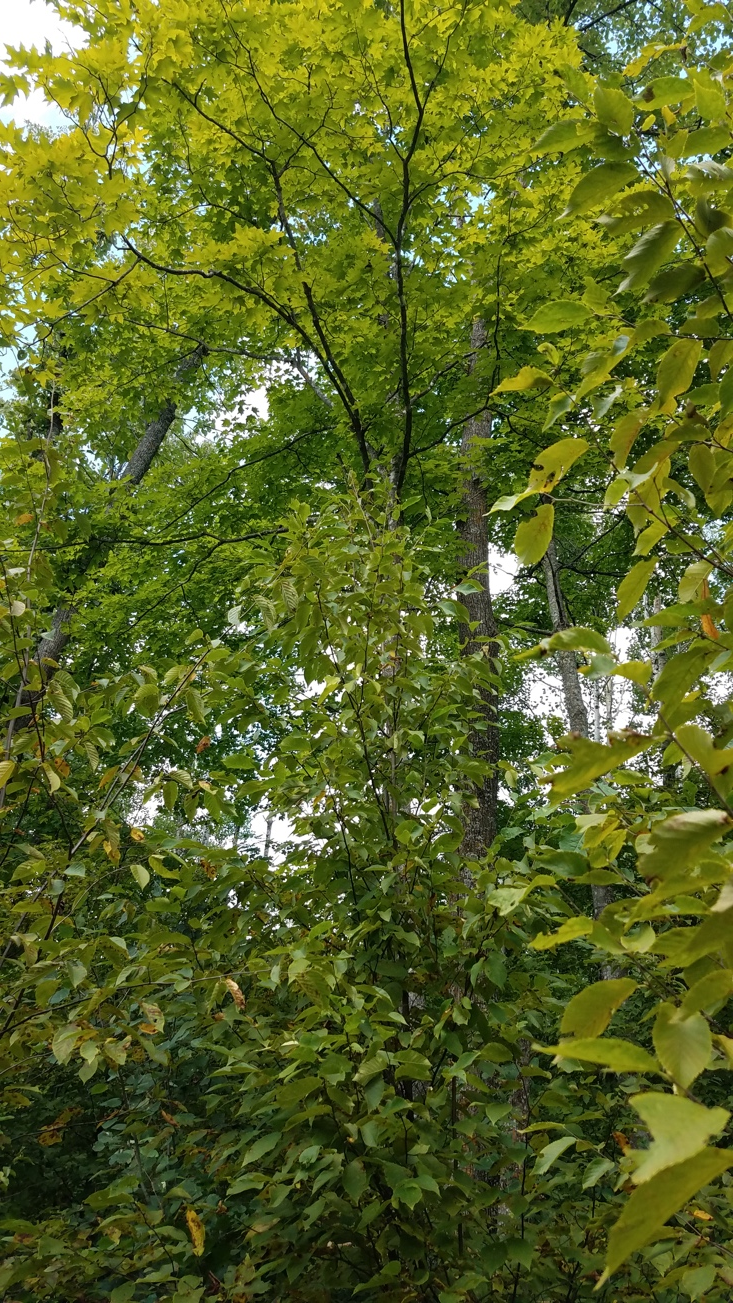
Figure 3: A young sugar maple tree in the mid-story, potentially shading out advanced regeneration of other hardwoods below. (Summer of 2018)
Post-treatment assessment
Table 4: Regeneration plots 2 years after cutting (2013)
| Species | Regeneration (trees per acre) |
| Red oak | 406 |
| Sugar maple | 1560 |
| Paper birch | 83.5 |
| Basswood | 33.5 |
| Aspen | 425 |
| Ash | 16.5 |
| Red maple | 50 |
Table 5: Regeneration plots 5 years after cutting (2016)
| Species | Regeneration (trees per acre) |
| Red oak | 864 |
| Sugar maple | 2822 |
| Paper birch | 312 |
| Basswood | 312 |
| Aspen | 218 |
| Ash | 16.5 |
Plans for future treatments
The stand will be re-assessed in ten years to examine the need for variable density thinning, as well as to monitor the status of stand growth, health, and wildlife use.
Costs and economic considerations
The total timber sale revenue was $4,752.00 with mixed hardwoods bringing in $3,112.00 (Table 4).
Table 6: The timber harvest value by species.
| Timber Species | Quantity (cords) | Value |
| Paper Birch (bolts) | 16 | $324.00 |
| Oak (bolts) | 3 | $150.00 |
| Mixed Hardwood (pulp) | 389 | $3,112.00 |
| Basswood (bolts) | 44 | $1,056.00 |
| Ash (bolts) | 5 | $110.00 |
| Total | 457 | $4,752.00 |
Summary / lessons learned / additional thoughts
A selection system was applied to 65 acres of an uneven-aged stand of mature northern hardwoods (MHn35) in Aitkin County, Minnesota. The management goals involve maintaining a multi-aged system for structural diversity and promoting the growth of quality crop trees. Harvests are to occur on cutting cycles of ten to twenty years, with the stand being harvested using both single tree and group selection. Harvests are to be focused on decreasing the basal area of red maple and sugar maple throughout the stand. Between cutting cycles, variable density thinning is recommended in order to maintain the growth of northern red oak and paper birch.
Maintaining a multi-aged hardwood stand promotes ecological resilience against climate change and protects wildlife habitat, while also generating revenue from harvesting quality crop trees. Climate change is introducing new pathogens, diseases, migrating species, and shifting habitat ranges. By promoting multiple species in multiple age classes, the impacts of these shifting variables on an ecosystem can be reduced. Multi-aged silviculture systems deal with the uncertainty of climate change by providing a short- and long-term strategy that allows for gradual adaptive adjustments to the changing environment. Multi-aged systems help to sustain ecological integrity which leads to accommodating change rather than resisting it as that can bring about a rapid transition that leaves the ecosystem unable to returned to desired conditions. The additional management to remove unhealthy trees and maintain a desirable density will help to increase the viability of the residual trees as well.
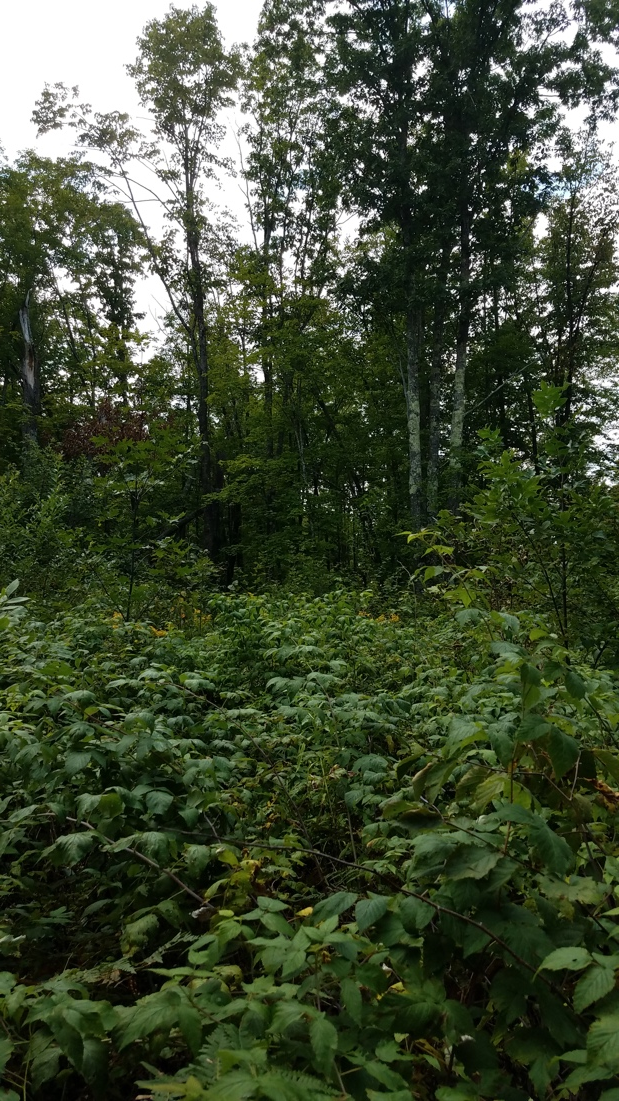
Figure 4: Note the significant herbaceous and woody understory layer, as well as the advanced regeneration of maple. (Summer of 2018)
Supplemental content
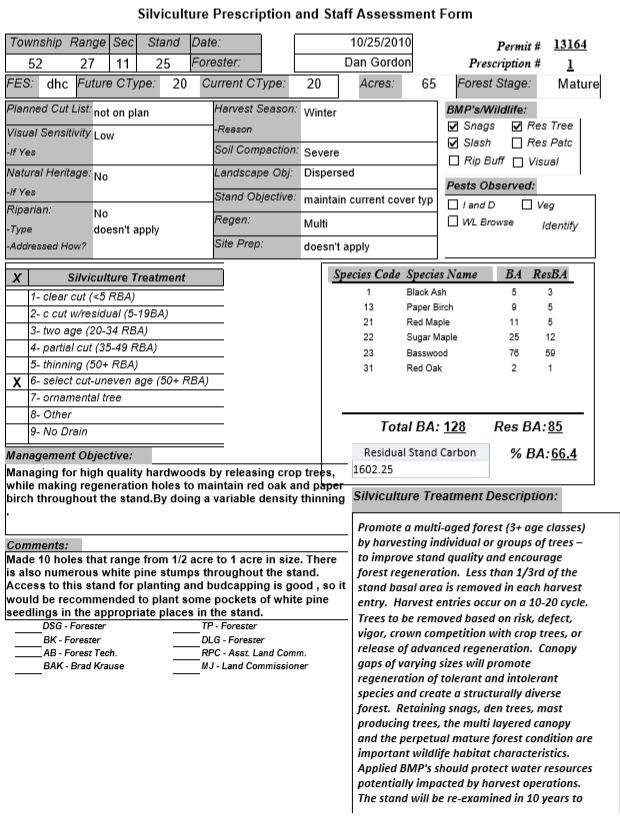
Assessment prescription
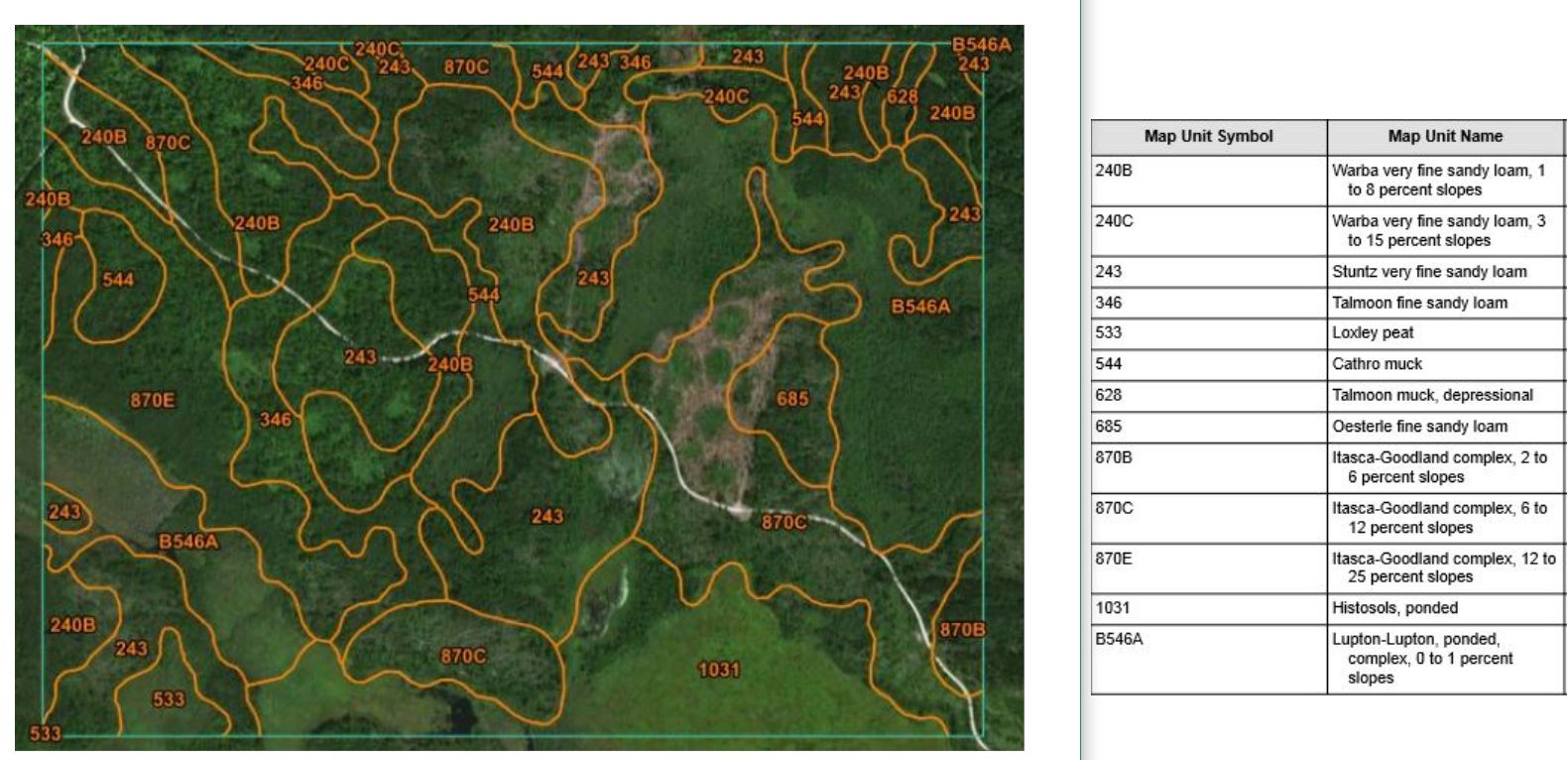
Full Web Soil Survey report
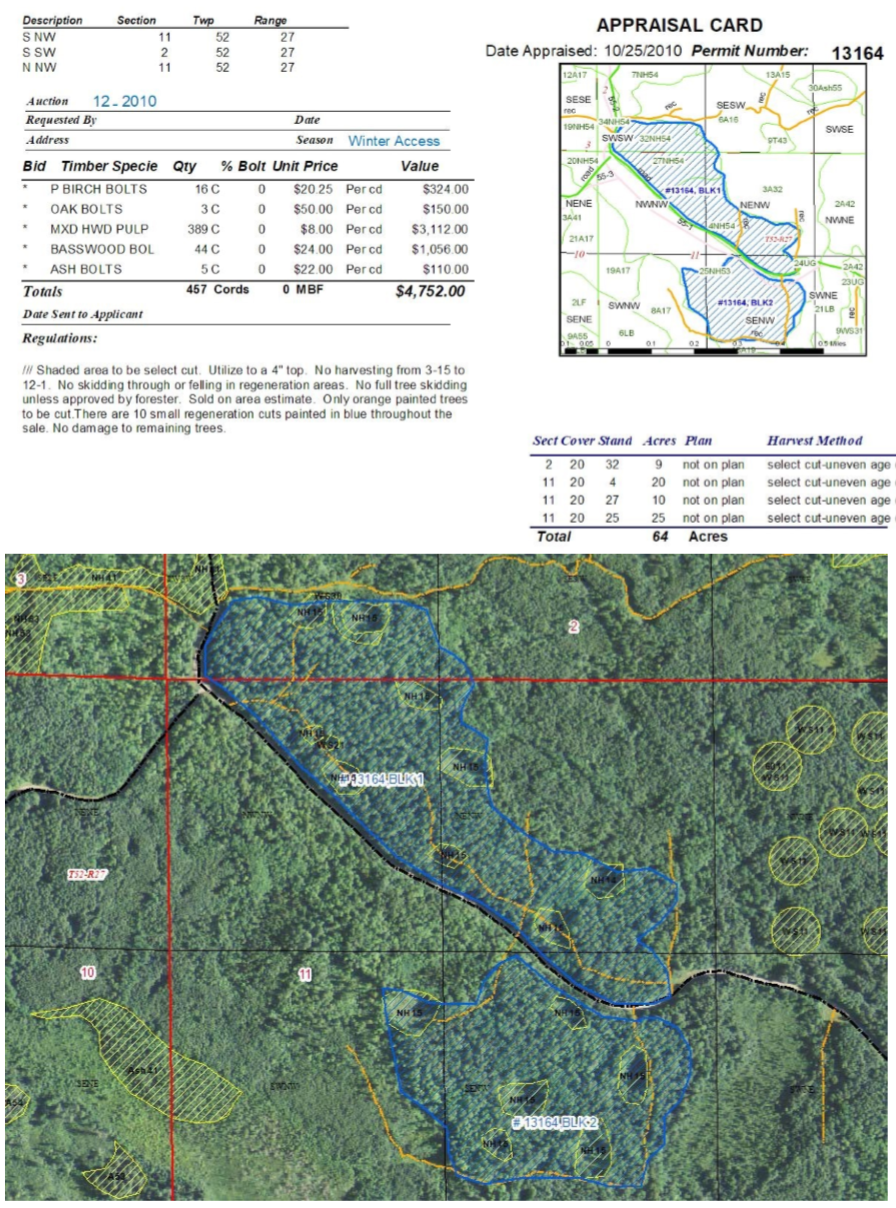
Timber sale outline
